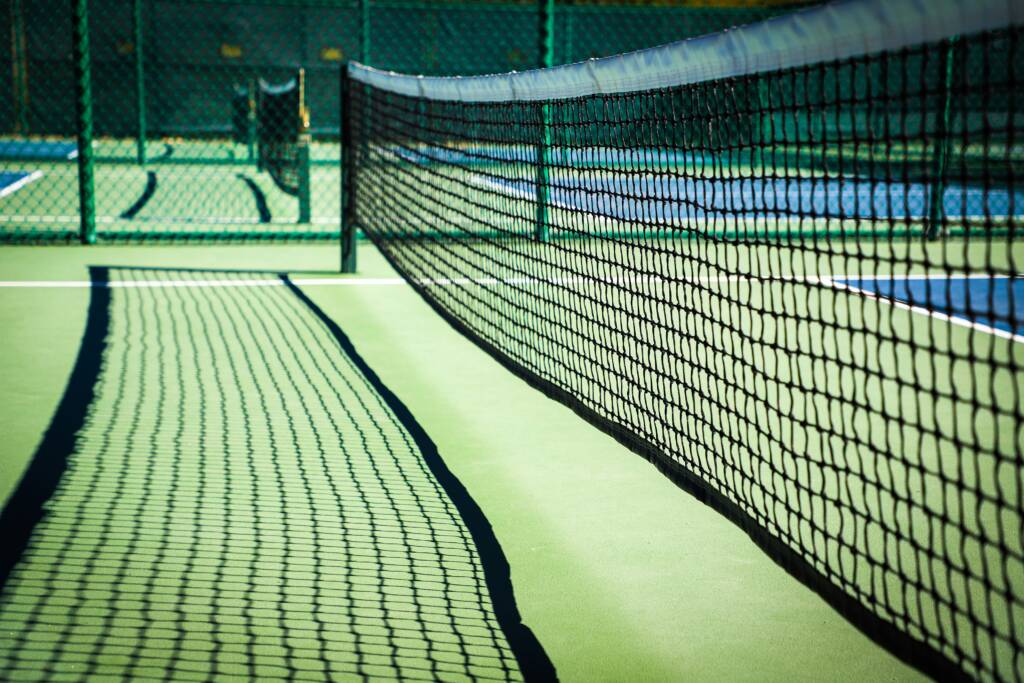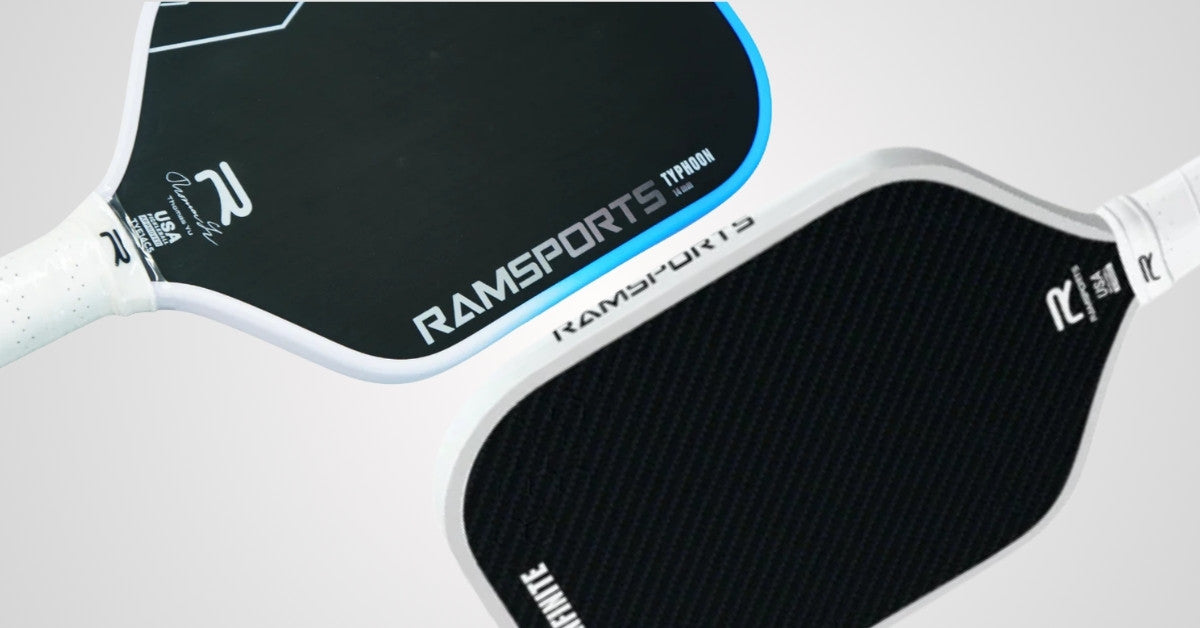Pickleball Nets vs Tennis Nets: What’s the Key Difference?

Pickleball is taking the world by storm. From driveways and rec centers to full-blown tournaments, people of all ages are picking up paddles and jumping into the game. But as fast as it’s growing, one big obstacle remains - the lack of dedicated courts.
That’s why many players are getting creative, repurposing tennis courts to get their pickleball fix. But that raises a common question: Can you really play pickleball with a tennis net?
At first glance, both sports seem pretty similar. There’s a net, a court, and players trying to outsmart each other with quick reflexes and smart shots. But if you zoom in, especially on the net, the differences between pickleball nets and tennis nets start to make a big impact on the game, especially for players who care about proper form and reliable pickleball equipment.
So, what really separates a pickleball net from a tennis net, and why does it matter?
What Are the Differences Between Pickleball Nets and Tennis Nets?
While both sports use a net stretched across the court, pickleball nets and tennis nets differ in height, width, design, and setup as they influence everything from gameplay strategy to shot accuracy.
Choosing the right pickleball equipments helps ensure consistent, regulation-level play.
Net Height
One of the most noticeable differences between a pickleball net and a tennis net is the height.
Pickleball Nets: Officially, these stand 36 inches high at the posts and dip slightly to 34 inches at the center. That small curve isn’t a flaw, it’s by design. Since the ball in pickleball doesn’t bounce as high or fast as a tennis ball, the lower net supports smoother rallies and quicker exchanges.
Tennis Nets: Tennis nets are 42 inches at the posts and 36 inches at the center, making them taller overall. This extra height is necessary because tennis balls travel faster and bounce higher, requiring a larger barrier for both safety and fairness in gameplay.
The lower height of a pickleball net encourages quicker volleys and more net-focused play. A tennis net, by comparison, makes you work harder to get the ball over, possibly changing your game in unintended ways.
Court Size and Net Width
Another major difference lies in the net width, which is determined by the size of the playing court.
Pickleball Net Width: A standard pickleball court is 20 feet wide, and the net spans just a bit wider or a 22 feet in total. This width is perfectly proportioned for the smaller court and more intimate gameplay of pickleball.
Tennis Net Width: Tennis Nets: Singles courts are 27 feet wide, and doubles courts go up to 36 feet. So, tennis nets span a whopping 42 feet, creating space for powerful serves and wide-angle shots.
Portability and Setup
In terms of setup, pickleball nets are generally the more portable and lightweight option.
Pickleball Nets: Most are lightweight, freestanding, and incredibly easy to set up. They’re designed to go anywhere - from community gyms to your own driveway. You can assemble one in minutes, play a few games, and pack it up with ease.
Tennis Nets: Typically more permanent in design, tennis nets are fixed between two sturdy posts and tensioned using a crank system. While professional courts require strict net installation, backyard tennis setups can still be manageable but are usually more complex than those for pickleball. It’s also great for permanent courts, but not something you’ll throw in your car for a weekend game at the park.
Net Material in Terms of Durability and Design
While both pickleball nets and tennis nets share similar materials, there are differences in construction based on the sport's demands.
Tennis Netting is built to withstand high-speed balls, tension, and weather elements. The netting is typically double-braided nylon or polyester and reinforced at the top with a white vinyl band that contains a steel cable. It’s designed to last for years and endure powerful impacts.
Pickleball Nets also use durable materials like nylon or polyester, but since the game involves lighter balls and less forceful impacts, the netting doesn’t need to be as thick or tightly tensioned. Many pickleball nets are designed with lighter frames and mesh to prioritize mobility. This keeps things mobile and user-friendly.

Can You Use a Tennis Net as Pickleball Nets (or Vice Versa)?
Technically, yes. But it’s not the best idea!
Many community courts are now “dual-lined” for both sports, but using a tennis net for pickleball isn’t ideal without adjustment.
Too Tall: A tennis net is 2 inches higher at the center than a regulation pickleball net. That small difference can cause misjudged shots or lead to overcompensating with higher hits.
Too Wide: A 42-foot tennis net is nearly double the width of a pickleball court. This throws off your court awareness and could even be a tripping hazard.
Gameplay Issues: Practicing with the wrong net builds habits that don’t translate well to regulation play. You may end up relying on lobs or avoiding net play altogether.
There are adjustable net systems on the market that allow you to switch between pickleball and tennis heights with a quick tweak, ideal for multi-use courts. Some creative players use a temporary pickleball net set up inside a tennis court. This allows you to maintain the proper pickleball net height and dimensions without interfering with the tennis setup.
What Happens If You Use a Tennis Net for Pickleball?
Using a tennis net as a stand-in for a pickleball net might be convenient, but it changes the dynamics of the game:
-
Higher Shots: The added height forces players to hit the ball higher than necessary, which may lead to lobs instead of controlled dinks or volleys.
-
Muscle Memory Conflicts: Practicing on a tennis net builds habits that don’t translate well to proper pickleball technique. You’ll start adapting to the wrong net height, which can hurt your performance when switching to a proper setup.
-
Gameplay Disruption: Pickleball is all about quick reactions and sharp net play. A taller net creates frustration for those used to quick exchanges over the lower center of a pickleball net.
Is There a Workaround?
If you're stuck with a tennis court, there are still ways to make it work:
-
Adjust the Net Height: Some tennis net systems allow height adjustment. Dropping the center to 34 inches brings it closer to regulation pickleball height.
-
Use a Portable Pickleball Net: The best option. Set it up inside the tennis court, and you’ll have a proper-sized net without messing with the existing setup.
-
Temporary Court Markings: You can tape or chalk temporary pickleball lines inside a tennis court. Combined with a portable net, this creates an ideal hybrid setup.
Small Nets, Big Differences
At the end of the day, a net isn’t just a net. It’s a core part of the game. And when it comes to pickleball vs tennis nets, those small differences in height, width, and setup can make a big difference in how the game feels and plays.
So, while you can technically play pickleball using a tennis net, it’s far from ideal.
If you’re serious about improving your skills and enjoying the game the way it’s meant to be played, do yourself a favor: get a proper pickleball net. Resort for portable models instead as they are affordable, easy to carry, and give you the freedom to turn just about any space into your personal pickleball court.


